HMS St Vincent (BB-1910)
Back to Commonwealth Ships List
The small cross-Channel ferries that had been converted to handle seaplanes had proved the concept of using aircraft from ships. With the Washington Treaty requiring massive reductions in the size of current fleets and limiting the size and armament of new construction the British had the small 12" armed dreadnoughts that though they were only 10-12 years old had to be scrapped. The only way to save any of these ships was to convert them to anciliary duties. Dreadnought, the Bellerophons and the St Vincents were converted to ADV's, while the larger Neptunes were reduced to training ships and one was even converted to an escort carrier (and as never weres their fate is yet undecided). The larger 13.5" BB's of the King George V and Orion types were sold or given away, while the Iron Dukes were retained. Of the battlecruisers, the four remaining Invincibles and Indefatigables were sold. The remaining Lions, Tiger, Renown and Hood types were all kept or never existed (depending on which scenario they are in). The removal of main armament and the space that provided, allowed the ships to also be used as trials ships for all sorts of cruiser and lesser types of weaponry. Dreadnought had the single 6" turret fitted. Bellerophon a twin 6" fitted. Temeraire a twin 7.5" turret. Lastly the Superb had the triple 6" fitted. In this page the St Vincent had the triple 8" while the Collingwood got the twin 5.5".
The St Vincent class were the biggest of the Dreadnought clones and their
post-war service mirrored the Dreadnought and Bellerophon's. Only two of the
three St Vincent's remained as the Vanguard had exploded and sunk in 1917 due to
unstable gun powder. Their first transition was the removal of the Q, R, and X
turrets and the fitting of an accommodation and classroom block in place of the
X turret while a pair of twin 5.5" turrets replaced the Q and R turrets on
Collingwood, while St Vincent received a pair of the new triple 8" in place of
its Q and R turrets. The 5.5" were the same turrets as fitted to the two follow on
Majestic Class that
were allowed to be completed to replace the proposed
Nelson/G3/N3 hybrid,
while the triple 8" first appeared on the
County class cruisers.
Some thought had been given to the conversion of these ships as they were to
be able to multi-task as training ships as well as area defence vessels. As
training ships the back 2/3's of the hangar could be walled off and converted to
extra accomodation for students. The same conversion could also be used for
troop transport. While only retaining 1 x twin 12" turret this would certainly
be enough to see off any converted merchantman raiders, while the smaller gun
armament provided cruiser, destroyer and AA guns for the cadets to train on. In
the mid 1930's when these ships were looked at being converted to the Area
Defence Vessel concept, deleting another 12" turret (aft) in favour of aircraft
was considered an advantage as aircraft had proved themselves enough.
The ADV's found themselves in all sorts of strange places from Fiji in the
middle of the Pacific to Hong Kong, the Maldives and Cocos Keelings in the
Indian Ocean, and places like St Helena and the Canaries in the Atlantic. They
proved extrmely versatile beyond their original specifications and even joined
Malta convoys full of food and with extra AA guns fitted, and with land based
Hurricanes and Spitfires that could be launched off the catapult and fly on to
Malta (fitted with a detachable one off launch doodad).
The St Vincent was at Scapa Flow in 1940 and added to the ships being used in
the Norwegian campaign. Based at Bodo, the St Vincent's aircraft provided
support to the troops ashore and as those were forced back on the port the ships
12" and 5.5" provided direct fire support. However a raid by German Me109's and
Ju-87 Stukas, brushed aside the St Vincent's Spitfire float planes and four bomb
hits from the Stukas sunk the St Vincent. Its remains were broken up post-war.

Floatplane off HMS St Vincent over the fleet.
| Displacement | 19,250 tons standard, 22,000 tons full load | ||
| Length | 536 ft | ||
| Breadth | 84 ft | ||
| Draught | 28 ft | ||
| Machinery | 4 shaft Parsons turbines, 24,500shp As completed, 17,500shp as TS/ADV | ||
| Speed | 22 knots as completed, 17-18 knots as TS/ADV | ||
| Range | 6900 miles at 10 knots | ||
| Armour | 10-7in belt, 11in turret faces (12" turrets), 3in decks | ||
| Armament | As Completed 1909 10 x 12" (5x2) 20 x 4" QF (20x1) |
As Training Ship 1924-1935 4 x 12" (2x2) 4 x 5.5" (2x2 StV) 6 x 8" (2x3 Col) 4 x 4" AA (4x1) 4 x 2pd (4x1) |
As ADV from 1935+ 2 x 12" (1x2) 4 x 5.5" (2x2 StV) 6 x 8" (2x3 Col) 4 x 4" AA (4x1) 2 x 2pd (2x1) 14 x 20mm (14x1) |
| Aircraft | nil | nil | 6-8 depending on type |
| Torpedoes | 3 x 18" (3x1 submerged) | nil | nil |
| Complement | 750 (835 as Flagship) | ||
| Notes | HMS St Vincent (1910) Sunk
Bodo, Norway 1940 by Stukas. HMS Collingwood (1910) HMS Vanguard (1910) Sunk accidental explosion 1917. |
||
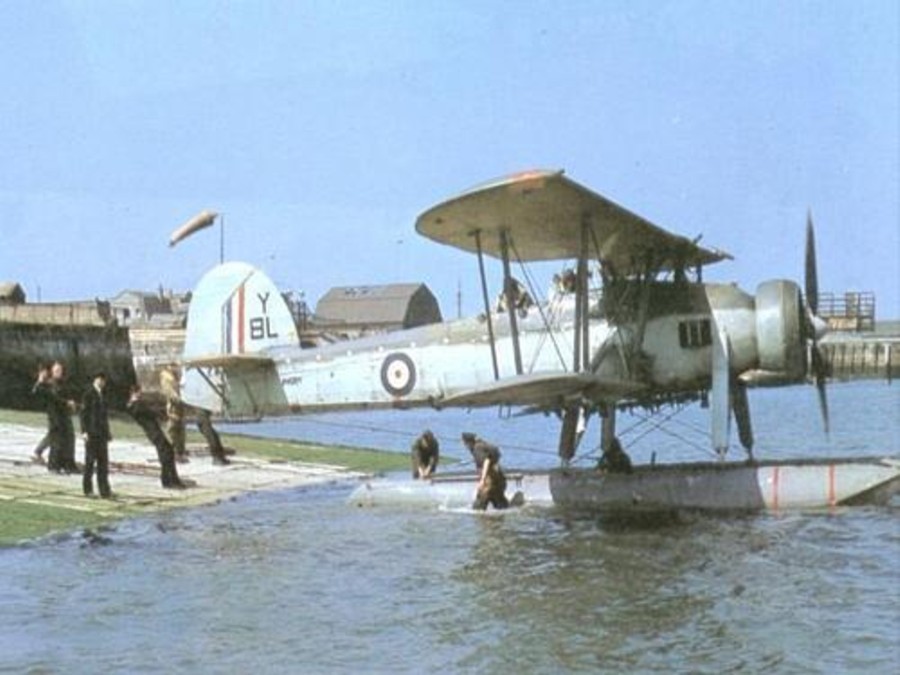
Landing a Fairey Sworfish floatplane for servicing ashore.
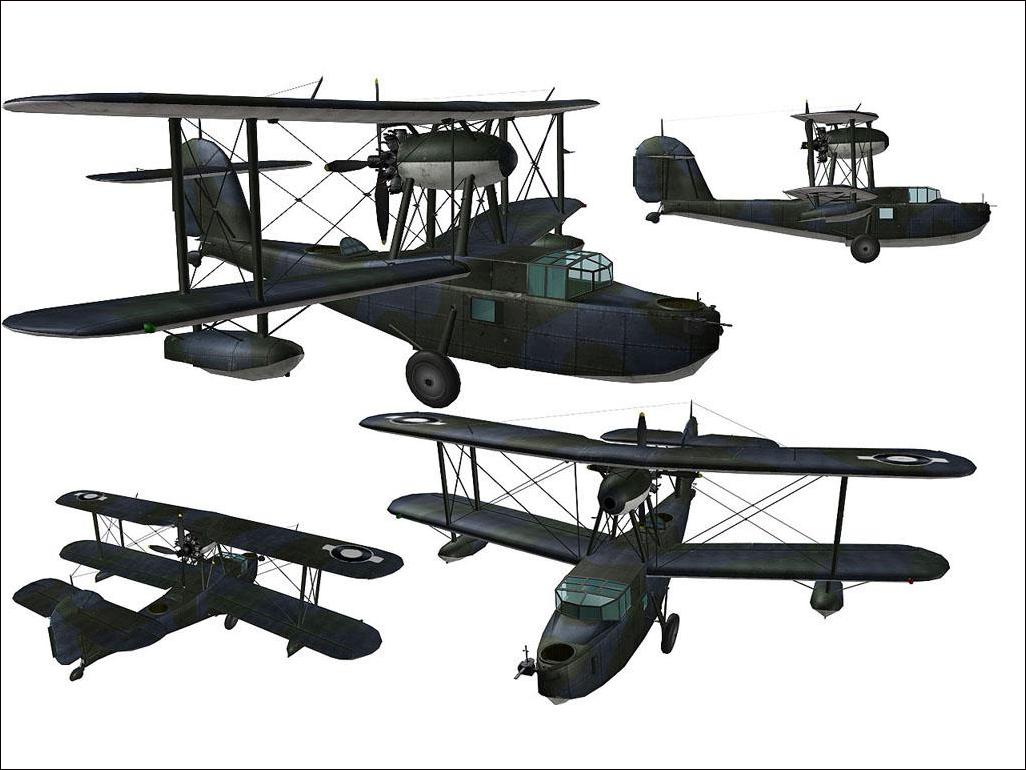
The Supermarine Walrus was the major search aircraft, and could
carry small bombs and/or depth charges.
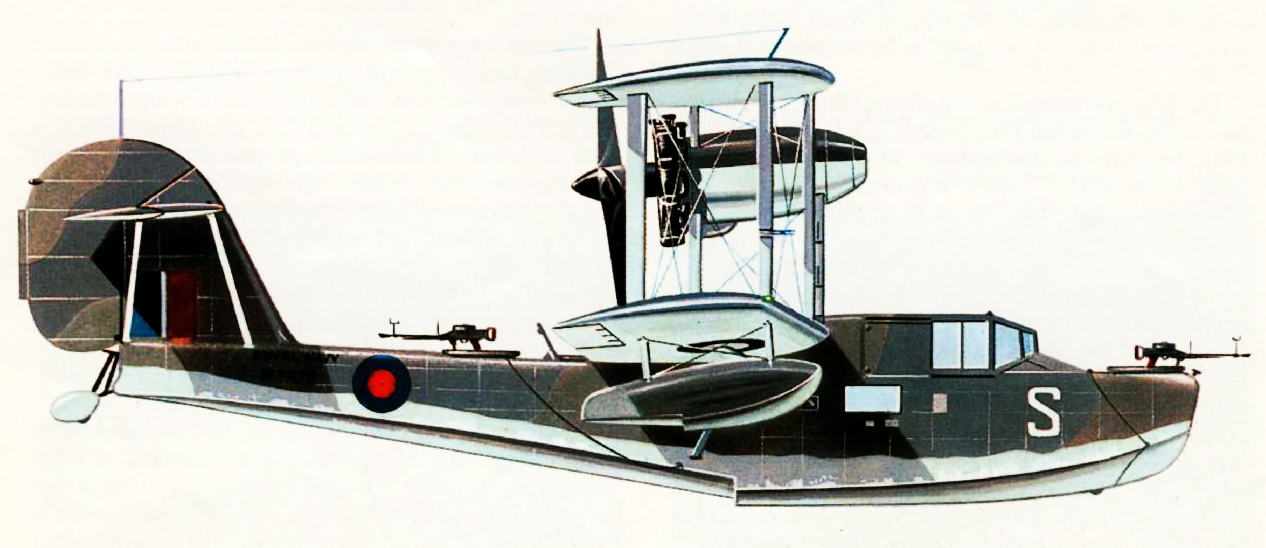
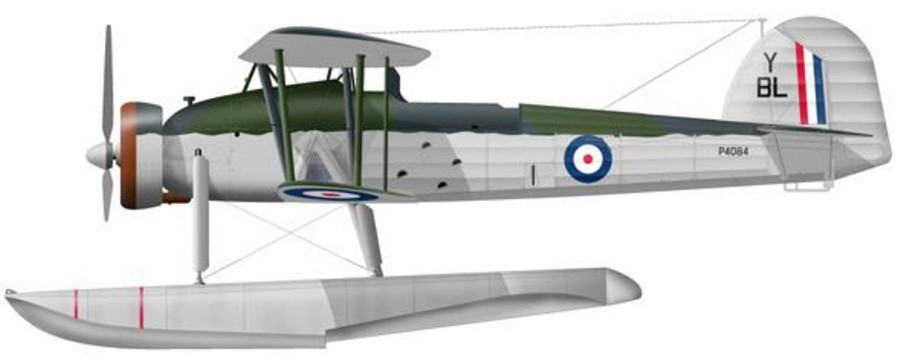
Fairey Swordfish Floatplane was the strike aircraft for the ADV's, able to carry bombs, rockets and depth bombs.
Spitfire floatplanes provided fighter cover in areas the enemy least expected.
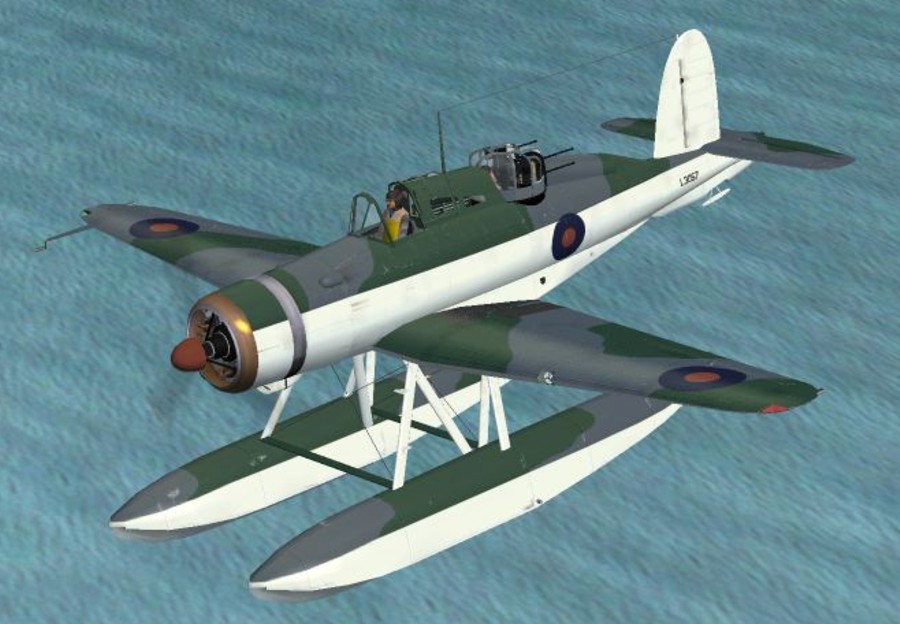
The Blackburn Roc and Skua also acted as fighter aircraft but
could also carry small bombloads and later underwing rockets.
Older drawings of the St Vincent ADV's
Above drawings come from (Jabba, A Arthur, Nigevids)